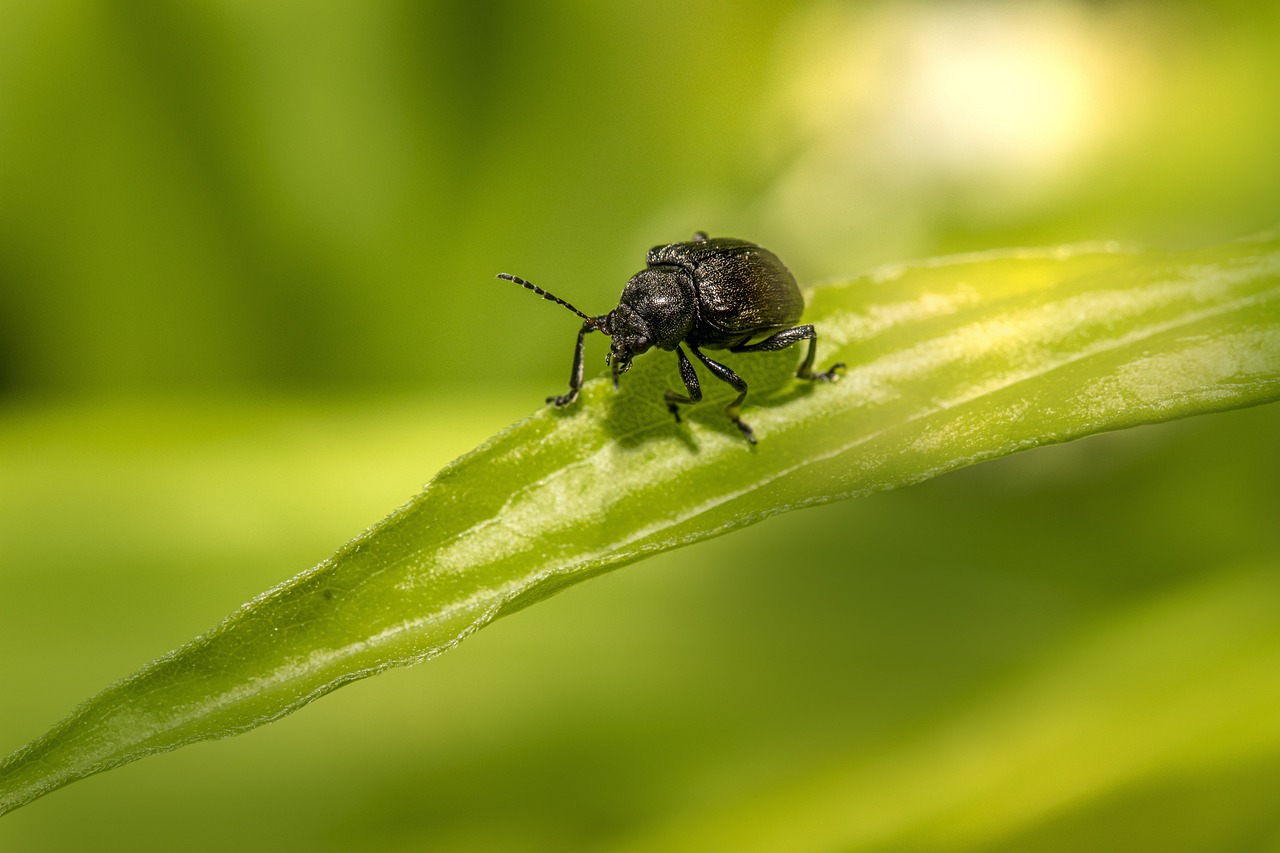The Western Grape Rootworm (Bromius obscurus) is a beetle species that primarily affects grapevines, causing damage to both the foliage and the roots of the plant. Here’s an overview of this pest:
Key Characteristics:
- Appearance:
- Size: Adults are small, about 4-5 mm in length.
- Color: They are dark brown or black with a metallic sheen.
- Shape: Oval-shaped with slightly rounded bodies.
- Life Cycle:
- The adult beetles emerge in spring and early summer, feeding on the leaves of grapevines.
- Egg Laying: Females lay eggs on the soil surface or at the base of grapevines. The larvae, once hatched, burrow into the soil and feed on the roots of the grapevine.
- Larval Stage: The larvae cause significant damage by feeding on grapevine roots, weakening the plant and potentially reducing crop yields.
- The pupation occurs in the soil, and the next generation of adults emerges the following spring.
- Damage to Grapevines:
- Adult Feeding: The adults feed on the leaves of grapevines, creating small, round holes in the foliage. Heavy infestations can reduce the plant’s ability to photosynthesize.
- Larval Feeding: The larvae feed on the roots, which is more destructive than the leaf feeding. Damaged roots can stunt the growth of the grapevine, reduce its vigor, and increase susceptibility to other stresses or diseases.
- Behavior:
- Adults are most active during the warmer months and can be found feeding on the upper parts of grapevines.
- Larvae stay in the soil and target the roots, particularly of younger vines.
- Control Methods:
- Cultural Practices: Crop rotation and maintaining healthy vineyard soil can reduce rootworm populations.
- Chemical Control: Insecticides may be used to control adult beetles, but timing is essential to target them during their active feeding periods.
- Biological Control: Some predators and parasitoids may help reduce populations of the Western Grape Rootworm.
Conclusion:
The Western Grape Rootworm (Bromius obscurus) poses a threat to vineyards, primarily through its larval feeding on grapevine roots and adult feeding on leaves. Effective pest management, including monitoring and the use of chemical or biological controls, is crucial to prevent severe damage to grape crops.
Visited 899 times, 2 visit(s) today
Views: 1322
Subscribe to the newsletter:
